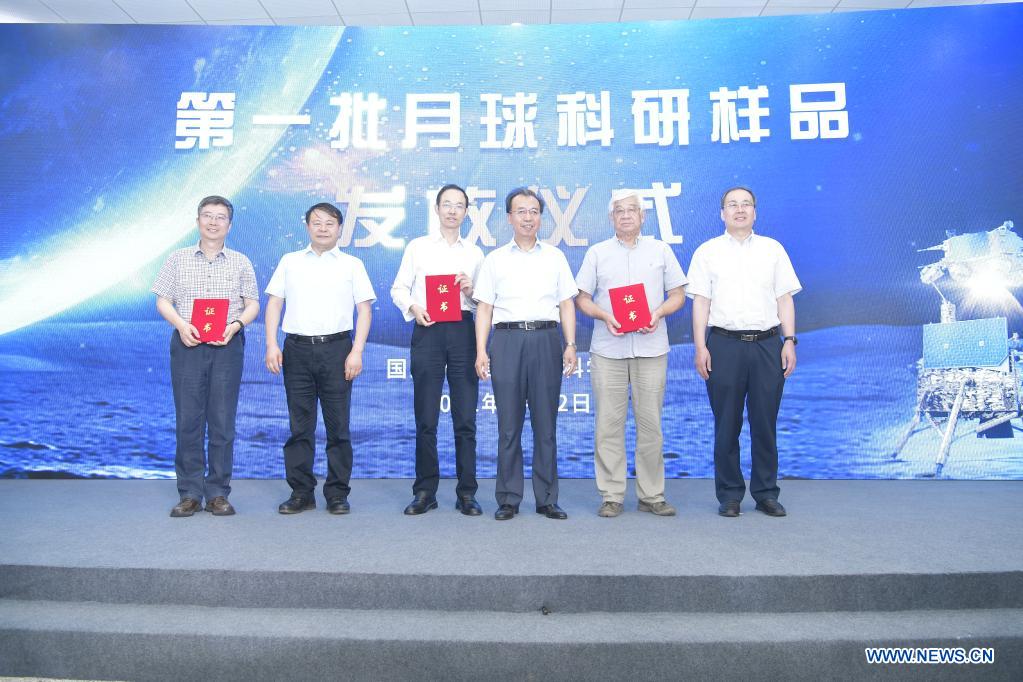China kicks off lunar sample study programs
China on Monday delivered about 17 grams of lunar samples brought back by the Chang'e-5 probe to 13 institutions, which had applied for research programs to the Lunar Exploration and Space Program Center of the China National Space Administration.
China on Monday delivered about 17 grams of lunar samples brought back by the Chang'e-5 probe to 13 institutions, which had applied for research programs to the Lunar Exploration and Space Program Center of the China National Space Administration (CNSA).

Photo taken on July 12, 2021 shows the ceremony of delivering the first batch of lunar samples to research institutions in Beijing, capital of China. (Photo by Zhang Gaoxiang/Xinhua)
Speaking at a ceremony to mark the delivery, Liu Jizhong, director of the center, said that this is the first batch of lunar samples delivered to research institutions. More samples will be released and delivered in the future as planned.
Hoping that more and more research institutions will take part in the lunar sample study in the future, Liu said China is willing to promote international cooperation and invite foreign scientists for joint research on lunar samples.
He noted that China's Chang'e-6 probe will also bring back lunar samples and the sampling on Mars and asteroid has been included in the long-term plan.
Pei Zhaoyu, vice director of the center and director of Lunar Sample Management Office, informed the press that the center had received 85 applications from 37 applicants working with 23 research institutions including China's Ministry of Education, Ministry of Industry and Information Technology, Ministry of Natural Resources and the Chinese Academy of Sciences (CAS).
After evaluation, 31 applications from 13 research institutions have been granted approval to study the first batch of lunar samples, Pei said, adding that the next round of application evaluation has been scheduled for September this year.
He mentioned that the center has not received any formal application from foreign research institutions. The CNSA encourages joint international study of lunar samples, in which foreign scientists can participate, for instance, by joining a Chinese research team.
Pei added that the members of the expert committee set up to review and evaluate lunar sample study applications are so far all from China. The committee would open its positions to foreign experts in the future according to the need for sample study and international cooperation.
Zhu Rixiang, president of the expert committee and also a member of the CAS, told the press that the approved study applications cover fields such as lunar surface process, volcanic activity age, lunar evolution process, and mineral and volatile composition.
The Chang'e-5 samples are different from those obtained by the United States and the Soviet Union in the past. The study of Chang'e-5 samples will offer new insights into the evolution of the moon and planets, and the habitability of planets, he added.
The lunar samples were delivered to institutions including those from the CAS, China University of Geosciences (Beijing), China University of Geosciences (Wuhan), and Sun Yat-sen University.
The Chang'e-5 probe, comprising an orbiter, a lander, an ascender, and a returner, was launched on Nov. 24, 2020. The return capsule landed in north China's Inner Mongolia Autonomous Region on Dec. 17, retrieving about 1,731 grams of moon samples.

